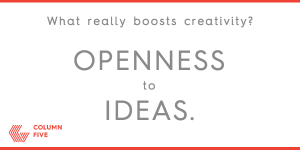Redefining experiences is the key when you are looking to transform your business on a large scale. Revamping the experiences you offer to everyone within and outside the business environment demands higher cross-functional alignment to meet consumer requirements. These experiences are strategized by teams using visions as an anchor.
You may have a service-based or a product-based experience to offer. The core of your business lies in adding value to the customers’ lives and enhancing them further.
It is not easy to plan and design the experience as it needs a solid vision. Experience vision is a useful early-stage technique that helps overcome the uncertainty of today’s world. Your business must be prepared to work through uncertainty. And therefore, you need to encourage the co-creation of great long-term visions which are ready to implement and drive desired results.
This is especially difficult when businesses must follow through on lofty vision statements that may appear nebulous and hence difficult to focus on. And this is where building a robust experience vision becomes necessary.
What is experience vision?
Experience vision is a term made popular by Jared Spool, who mentions that “if we tell the right story, everyone will focus on the experience of the user.” The whole concept is based on the idea that people are predisposed for stories and that narratives focused on a protagonist are more effective than broad assertions.
You can adapt the strategy of experience vision to shape a medium to long-term product/service vision. The goal should be to emphasize user issues and address those meaningfully by finding solutions to enhance the experience.
Note that a vision statement is different from the experience vision, as the former outlines the business’s broad bounds. At the same time, the latter imagines the future as a narrative based on consumer research.
The question is, how can you combine various types of experiences — user experience (UX), customer experience (CX), and employee experience (EX) — into a coherent whole?
Bring in Total Experience
Total Experience, also abbreviated as TX, deals with every touchpoint that affects and influences the end-users — including business staff. This is a unified approach that improves the company’s brand marketing, data analytics, and governance.
Customers have grown increasingly dependent on digital interactions with firms over the last couple of years. On the other hand, employees needed to adjust (almost overnight) to a work-from-home mentality. And this opened the opportunity for businesses to rethink how they communicate with consumers and the experience they provide to their teams. And TX is all about integrating these experiences into a single, cohesive experience.
It is crucial to build such a cohesive experience especially because you may perceive consumers and workers as distinct entities. TX, therefore, proposes a more integrated strategy that pulls together customers, employees, associated vendors, and other businesses.
Emphasize on Research
Many businesses will have one or two visionaries to head the ship in the right direction. They tell you what the company’s vision should be and how it can build an experience vision. For instance, you can consider Steve Jobs and Jonathan Ive as visionaries from Apple. There is a clear correlation between Apple’s success with its products by achieving Steve and Jonathan’s vision.
Unfortunately, most companies lack visionary leadership at the top and may need to find their inspiration elsewhere. In such cases, teams get their ideas from in-depth research into the unmet demands of their target customers.
Consider the transition that Netflix had to make from a mail-based rental business to a streaming service provider. Many users would inform them that they wanted DVDs delivered to their door, but they also experienced dissatisfaction due to delays, quality, and delivery timings. This pushed the company to start ‘video-on-demand services’, and gradually, with research, they transformed into a streaming service company.
Field studies and other research methods help you understand the present situation. Using this data, you can identify the areas in which customer or end-users’ experiences are less than ideal. Additionally, such tactics can unearth those users’ underlying aspirations and requirements.
Leverage such key research-based information to craft a perfect experience that blends the unmet requirements and aspirations. The finest possible experience is the one that alleviates stress and brings joy — you build your experience vision around this. You can gain insights by comprehending the gap between what your end users are experiencing now and what you would want them to experience in the future.
Create an inspiring narrative
The success of your experience vision lies in how impressively your build can provide a narrative around the offerings. It is not enough to merely listen to a good story; you need to tell it to make other people believe in it. And that story should be inspiring and meaningful enough to be passed on.
Having an experience vision shared in meetings is essential to take the first step in the right direction. But everyone in your team should ask a fundamental question when framing a story around experience vision — will this lead us to achieve your final goal?
This suggests that everyone should be aware of a unified story. And therefore, it must be memorable and infectious enough to endure the test of time. While it is difficult to develop a top story, remember, there is no one-size-fits-all recipe for success.
Hugh Dubberly and Doris Mitsch of Apple Creative Services have created several stores, but the Knowledge Navigator hit the right chords at the right time. A great story is one in which everyone in the company can see their efforts reflected in the larger goal.
Knowledge Navigator didn’t reveal the power supply, but the Powerbook engineer could see his work. You need to see your work within the scope of a vision by gradually imagining the small steps you need to take to reach there.
Base a UX strategy
When other people start articulating your experience vision to you to make sure you’ve heard it, you know it has taken off. You can find a top executive using your narrative to describe where the business is headed, reflecting that vision has truly taken off. All the while, they’ll be repeating, “This is where we aspire to be,” as they recount the tale to the assembled crowd.
The organization will focus less on what the competition is doing as key decision-makers think of the baby steps needed to achieve the vision. It takes a more tangible form when you have an experience vision to drive your user experience strategy. You will see your business transcend from “we need to deliver quality product/services” to “we need to craft brilliant, unmatched buying experiences for our users.” This is how you change the focus and work towards blending UX strategy within your experience vision.
Implementing the experience vision becomes a visible example of what excellent design can be in the company. And because of that, everyone within the organization is motivated to provide better-quality goods and services.
Vision validation
As a business, you’d first render a culture where everyone in the team should validate their efforts against the shared vision. Doing so continuously helps identify whether the actions are working toward or away from the final goal.
Again, it is necessary to take baby steps when the team is working towards a goal. You need to get your team on the same page because you need everyone to align their next step to a bigger vision. And, this may require frequent maneuvering of design, approach, and tactics. Such an approach is necessary when you put effort into delivering a cohesive experience to everyone within the business ecosystem.
This means teams should be questioning themselves constantly —”Does this get us closer to our goal?” Often, the follow-up conversation is just as insightful as the initial vision talk itself, which is a great approach to discover details of your business activities.
Your team should be ready to ascertain whether to proceed with a specific change if it interferes with your vision. Taking a step backward is sometimes necessary to move ahead.
Alternatively, there are times when your vision needs a correction. Imagine putting a red flag on the beach sand, making it easier for everyone to locate and follow, and if the tides are high, you take that flag behind. Ensure everyone knows about the changes you make to your vision along with the reason.
Unless you know where you’re going, the chances of getting there are slim. Making sure everyone has the same vision will make you feel like your work is important, even with the busiest of groups.
Conclusion
In times of uncertainty and ambiguity, experience visions may help us visualize the kind of experience we want to provide our recipients. Business executives may use this vision of the perfect future to help them achieve their intended outcomes.
It’s important to explain to staff how the vision will benefit consumers and the organization to understand why it’s so important. You must convey the same to your customers, consultants, and your business partners of what you’re doing to enhance their total experience. Build a detailed strategy for how you’re going to get there and what role they would play in it.
Business & Finance Articles on Business 2 Community(43)





